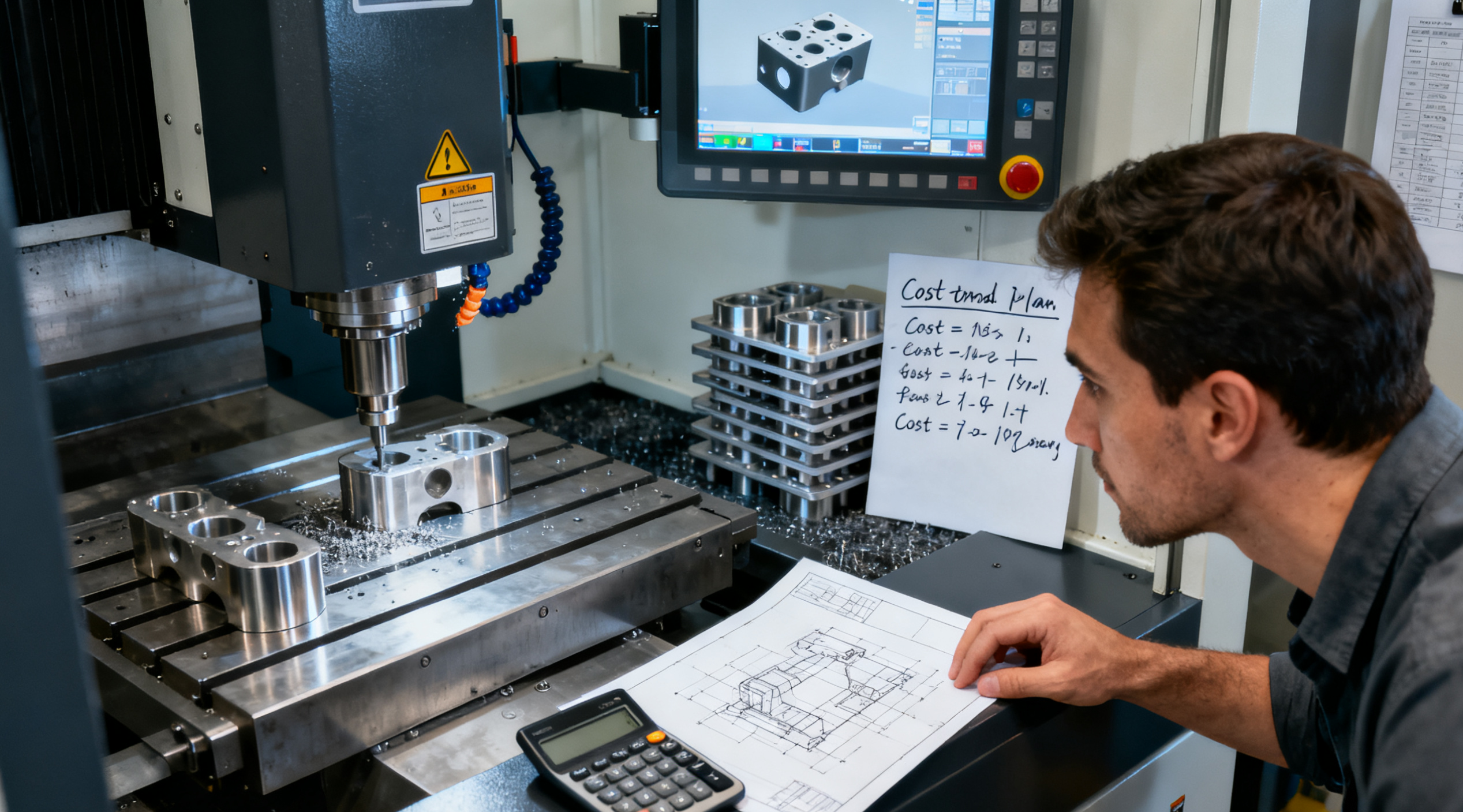
A startup I worked with needed 35 custom valve bodies for a fluid control demo. The drawings changed twice a week, and the local shop wanted $180 per piece just for the setup. Full production was months away, but the trade show loomed. Paying that rate would eat the entire seed round before a single unit shipped.
The Setup Fee Sting in Small Runs
The bite came from fixturing and programming time. Every new revision meant hours re-clamping and re-coding, even if the part only shifted a millimeter. For those valves, internal threads, and a 0.05 mm bore tolerance ruled out 3D printing, yet the quantity didn’t justify a $12,000 soft mold. Shops either refused the job or padded the quote to cover the hassle.
It’s the usual low-volume trap: design still fluid, numbers too small for economies, but precision can’t slip.
How CNC Kept the Budget Intact
They ran the job on a 3-axis mill with quick-change vises and a basic aluminum block. One operator wrote a macro that updated the tool path in minutes when the CAD shifted. Total programming dropped to 20 minutes per revision. Coolant through the spindle cleared chips fast, so surface finish stayed Ra 0.8 without hand polishing.
What held the line:
- Fast Fixture Swap: Soft jaws machined in-house, swapped in 90 seconds.
- Macro Magic: One-click updated offsets for bore size changes.
- Stock Choice: 6061 bar off the shelf, no minimum order.
Per-piece cost settled at $42 after the first five, and the last revision shipped same-day. The demo units worked flawlessly—threads sealed, bores spot-on—and the show closed two pilot orders.
When Low-Volume CNC Makes Sense
Under 500 pieces, especially with frequent tweaks or tight internals, milling from solid beats molding or printing every time. I’ve seen medical jigs cut in dozens and sensor housings in hundreds, all under budget because no tooling was scrapped when the drawing moved. The break-even usually hits around 800 identical parts; below that, the spindle wins.
For procurement leads staring at small-lot quotes, the fix is often simpler than it looks: standardize stock, reuse fixtures, automate the code. If you’re burning cash on prototype runs, a quick volume check points the way. Details at www.simituo.com.
A startup I worked with need
READ FULL